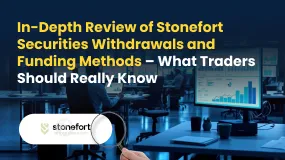简体中文
繁體中文
English
Pусский
日本語
ภาษาไทย
Tiếng Việt
Bahasa Indonesia
Español
हिन्दी
Filippiiniläinen
Français
Deutsch
Português
Türkçe
한국어
العربية
Markets in Q3: Goldilocks fairytale turns into bad bear nightmare
Abstract:If global market investors thought 2022 couldn’t get any more painful or unpredictable the last few months have certainly proved them wrong.

Another $9 trillion wiped off world stocks, oil down more than 20%, historic losses for bonds, war, and things became so ugly in G7 Japan and Britain in recent weeks that the authorities had to step in.
With inflation-fearing central banks racing each other to ramp up borrowing rates there have now been nearly 300 interest rate hikes over the last year.
It seems those goldilocks good times – where markets rally as economies chug along at just the right temperature – are definitively over.
Analysts at BofA liken it to going “Cold Turkey” and blame it for causing the third “Great Bond Bear Market”.
They calculate the 20% plus losses suffered by government debt investors over the last year are now a par with the post World War I and II years of 1920 and 1949, and the Great Depression rout of 1931.
The combined collapse in global stock and bond markets means global market capitalisation has been slashed by over $46 trillion.
“2022 in a Nut: Inflation shock caused rates shock which now threaten recession shock and credit event,” BofA analysts said, explaining that peace, globalisation and easy money was being replaced by an “inflationary era of war, nationalism, fiscal panic, quantitative tightening, high rates, high taxes”.
This quarter did have a spell of optimism when MSCI‘s 47-country world stocks index rallied 10% between July to mid August. But the Fed’s rate hike wrecking ball soon came swinging back in, and that index has plunged 15% since, leaving it down 25% and $18 trillion year to date.
Mounting recession expectations, along with the West‘s plans to stop buying Russian oil, have seen Brent prices nosedive 20% after their turbo-charged start to the year. Though Europe’s looming energy crisis means its natural gas prices are up 18% since July, back in late August than stat was almost 140%.
Wall Streets bear market meanwhile is now 268 days old and notched a peak-to-trough decline of about 24%. That is still relatively short and shallow compared with past drops though.
Since 1950, the average U.S. bear market lasted 391 days with an average peak-to-trough drop of just over 35%, according to Yardeni Research and banks from BofA to Goldman are warning the traditional end-of-year ‘Santa rally’ might be cancelled.
“The complacency regarding central banks has disappeared, it‘s been, it’s gone. But complacency regarding the macro situation, the geopolitical situation hasnt,” said Olivier Marciot, head of investments for multi assets and wealth management at Unigestion.
“You can just look all over the place, there is no glimpse of hope right now.”
King dollar
The only place to really take cover this quarter and for the year has been the dollar.
It has charged up another 7% leaving it up 17% for the year against the main world currencies. Against the Japanese yen and UK pound its an even bigger 20% and 18%, putting those currencies on course for their biggest respective yearly falls since 1979 and 2008.
The overall crypto market valuation has slumped to $940 billion from $2.2 trillion through 2022 although bitcoin hasnt added much to its 60% YTD fall this quarter at least, and ether has been boosted by an eco-friendly software upgrade.
Staggeringly, no notable EM currency has risen this quarter. Chinas yuan has slumped 7% to its lowest since the global financial crisis and a number of eastern Europe units have dropped another 10% as the Ukraine war has rumbled on.
Ukraine itself has joined Sri Lanka in default and concerns are rife in both currency and bond markets that Ghana and Pakistan are next.
Year-to-date $70 billion has fled EM hard currency bond funds, JPMorgan estimates, and MSCIs emerging markets equity index will see its a fifth straight quarter of losses and set its longest ever bear market, Morgan Stanley says.
Spluttering growth, the fallout from a prolonged property crash and a strict COVID policy mean Chinese and Hong Kong‘s indexes are down more than 15% and 20% for Q3 in what is their worst quarters in seven and eleven years respectively. Remarkably Turkey’s stock index is now up 70% for year after a further 30% rally although with the lira down 10% for the quarter and nearly 30% for the year there are fears that it could all unravel.
“The trigger, the reason and the cause of all this has been interest rates and inflation going through the roof,” Robecos head of emerging market equities Wim-Hein Pals said of the mass fall in markets this year. “Money is not free anymore”.

Disclaimer:
The views in this article only represent the author's personal views, and do not constitute investment advice on this platform. This platform does not guarantee the accuracy, completeness and timeliness of the information in the article, and will not be liable for any loss caused by the use of or reliance on the information in the article.
Read more

In-Depth Review of Stonefort Securities Withdrawals and Funding Methods – What Traders Should Really
For any experienced forex and CFD trader, the mechanics of moving capital are as critical as the trading strategy itself. The efficiency, security, and transparency of a broker's funding procedures form the bedrock of a trustworthy, long-term trading relationship. A broker can offer the tightest spreads and the most advanced platform, but if depositing funds is cumbersome or withdrawing profits is a battle, all other advantages become moot. This review provides a data-driven examination of Stonefort Securities withdrawals and funding methods. We will dissect the available information on payment options, processing times, associated costs, and the real-world user experience. Our analysis is anchored primarily in data from the global broker regulatory inquiry platform, WikiFX, supplemented by a critical look at publicly available information to provide a comprehensive and unbiased perspective for traders evaluating this broker.

MH Markets Deposits and Withdrawals Overview: A Data-Driven Analysis for Traders
For any experienced trader, the integrity of a broker is not just measured by its spreads or platform stability, but by the efficiency and reliability of its financial plumbing. The ability to deposit and, more importantly, withdraw capital without friction is a cornerstone of trust. This review provides an in-depth, data-driven analysis of the MH Markets deposits and withdrawals overview, examining the entire fund management lifecycle—from funding methods and processing speeds to fees and potential obstacles. MH Markets, operating for 5-10 years under the name Mohicans Markets (Ltd), has established a global footprint. With a WikiFX score of 7.08/10, it positions itself as a multi-asset broker offering a range of account types and access to the popular MetaTrader platforms. However, for a discerning trader, the real test lies in the details of its payment systems and the security of their funds. This article dissects the MH Markets funding methods withdrawal experience, leveraging pr

GAIN Capital Review: Exploring Complaints on Withdrawal Denials, Fake Return Promises & More
Is your forex trading experience with GAIN Capital full of financial scams? Does the broker disallow you from withdrawing your funds, including profits? Have you been scammed under the guise of higher return promises by an official? Does the GAIN Capital forex broker not have an effective customer support service for your trading queries? Concerned by this, many traders have shared negative GAIN Capital reviews online. In this article, we have discussed some of them. Read on!

Zenswealth Broker Review and Regulation Warning
Zenswealth Broker flagged as unregulated. FCA warns investors in latest review.
WikiFX Broker
Latest News
GCash Rolls Out Virtual US Account to Cut Forex Fees for Filipinos
WikiFX's New Evaluation of ATM Capital LTD: Does its License Protect the Arab Investor?
How a Fake Moomoo Ad Led to the “New Dream Voyage 5” Scam
Is Axi Legit? A Data-Driven Analysis of Its Regulatory Standing and Trader Feedback
Trive Investigation: High Score, Hidden Risk - The Profit Paradox
In-Depth Uniglobe Markets Commission Fees and Spreads Analysis – What Traders Should Really Know
FXPesa Review: Are Traders Facing High Slippage, Fund Losses & Withdrawal Denials?
CMC Markets Australia Revenue Surges 34%, But High-Net-Worth Clients Face Tax Phishing Threat
The 350 Per Cent Promise That Cost Her RM604,000
INZO Commission Fees and Spreads Breakdown: A 2025 Data-Driven Analysis for Traders
Currency Calculator



